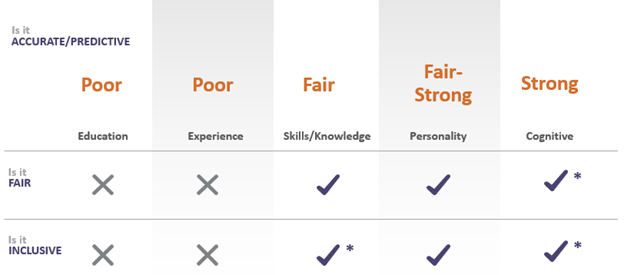The following is a guest post by Whitney Martin from ProActive Consulting and Danny Nelms from Work Institute.
For those who are fans of the NFL, the last few weeks (some would say months) of “buzz” have been filled with trade rumors, mock drafts, and non-stop discussion of which team is going to pick which player(s) in the draft. The process by which the NFL identifies the players which they believe have the greatest likelihood of success is rigorous, based on mounds of stats and metrics, and is super high stakes.
This got us thinking about similarities (and differences) between how the NFL selects players and how organizations select employees.
On any team— be it sports or industry—the goal is to select individuals to fill a specific role based on their unique skills and qualifications. In the NFL draft, potential players are evaluated based on their physical abilities, football skills, and potential for growth. NFL teams invest hundreds of hours scouting, evaluating, and using all available tools and resources to determine whether they will draft a particular player.
When companies select employees, however, the methods are frequently far less rigorous, even though the decision is also high stakes. Often organizations rely heavily on prior experience as a first screen—but how often does a promising rookie with tons of promise fail to deliver as a pro? Organizations also tend to over-emphasize educational attainment, though research would show that this is a poor predictor of job performance.
This year’s newest tool that is being used to evaluate potential NFL draft picks is the S2 cognitive assessment. The S2 purports to measure “how athletes process information at game speed and react when the pressure is on.” The NFL recognizes that physical athleticism and past achievements are not enough—they use the S2, along with other objective data points, to predict who most likely possesses “intangible instincts” or the “it factor” to succeed (from S2’s website).
Organizations would also be well served by incorporating objective assessments into their hiring processes. There are hundreds of well-developed assessment tools scientifically designed to measure a myriad of traits that may be critical for success in a given role. Certainly, you can use assessments to verify specific skill- and knowledge-sets, although this is only part of the puzzle. Organizations can also measure more stable traits like decision-making ability, tenacity, adaptability, communication skills, work ethic, interests, and commitment, just to name a few.
The NFL also uses the S2 beyond the selection decision to create “personalized on-field training tactics to improve performance.” Many assessments in the corporate world can also lend themselves to post-hire applications such as on-boarding, coaching, and career pathing.
What hiring lessons can we learn from the NFL draft?
- First, it’s clear the NFL is very thorough and has a very specific process that it adheres to in evaluating the talent they may consider drafting. Too often, organizations have a hap-hazard approach to selecting employees.
- The NFL uses both subjective of objective measures. Clearly the application is different, but we are all aware that the NFL looks at height, weight, 40-yard dash speed among others that are clearly objective measures. Too many organizations only have subjective criteria for hiring indicators.
- The NFL places significant emphasis on skills. In simple terms, the NFL does not really care whether you graduated magna cum laude from Northwestern or whether you only went to school for three years Northern New Jersey University. What matters is that the potential draft pick has consistently displayed the skills to do the job they are being drafted to do.
- Many NFL teams now embrace the use of a Cognitive assessment. Cognitive assessments are one of the strongest predictors of job success. Yet, few organizations use them preferring to evaluate candidates on education and experience which have almost no predictive value on job success.

In today’s environment, finding and hiring the right people is more difficult than ever. Too often organizations sacrifice good hiring processes in the name of getting people in the door and working. But with turnover at an all-time high and over 30% employee turnover occurring withing the first year, our “spidey sense” is telling us this is the wrong answer.
If more organizations mirrored some of the NFL’s draft practices, we might find that we would hire better people and with higher job success leading to lower employee turnover.


